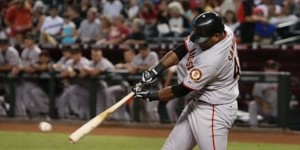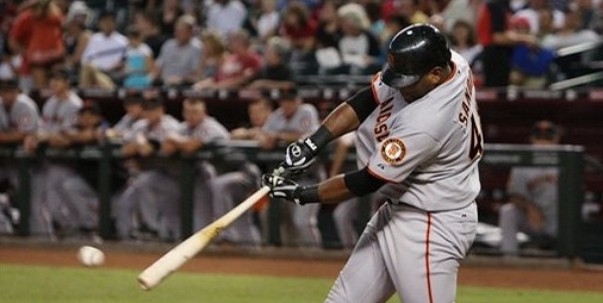Statistics and baseball are like biscuits and gravy…if you are from the South. One person that does not need any convincing regarding that statement is Marc Rubin, co-owner of RayRubin Sports Analysts. Rubin has been a statistics professor at Southern New Hampshire University Graduate School of Business for over 25 years and is frequently hired by baseball agents to synthesize data and shine the best light on their clients. Meanwhile, those agents have more time to then interact with clients, prospects and team executives. It has not always been an easy sell for Rubin, though.
Rubin recounts a situation several years ago when he was in Memphis, Tennessee for the annual Baseball Winter Meetings and had the opportunity to meet baseball agent Alan Nero of Octagon’s Baseball division. I am told that Nero was very kind to Rubin when Rubin made his pitch, but that Nero told Rubin he had no particular use for him because Nero’s agency (Octagon) was big enough to have fulltime stats personnel on board. Rubin quickly realized that his target market is the agencies that do not want or cannot afford the fixed cost of a fulltime hire.
In February 2011, I examined the assistance that Rubin provided to Brian Grieper of GPR Sports Management regarding the contract for current Texas Rangers catcher Mike Napoli.
Napoli was an interesting case; he asked for $6.1 million and the Los Angeles Angels of Anaheim asked for $5.3 million. Thereafter, Napoli was traded to the Blue Jays and finally ended up with the Rangers, before the Rangers and Grieper settled, preventing an arbitration hearing from occurring. And they settled at a figure above the midpoint. The midpoint would have been $5.7 million. Napoli, with the help of Marc Rubin, signed a $5.8 million deal, $100,000 above the midpoint.
 I recently got back in touch with Rubin, who offered up new information regarding some of his recent work. One player that particularly attracted my attention was San Francisco Giants third baseman, Pablo Sandoval. Sandoval is a client of Morgan Advisory Group, a company run by Ryan Morgan. With Morgan’s blessing, Rubin sent me the Pablo Sandoval Arbitration Report that he created, which according to Rubin, focuses on Sandoval’s distinctive success in MVP voting and his offensive prowess despite the void of much support. The report is available for free at the bottom of this article.
I recently got back in touch with Rubin, who offered up new information regarding some of his recent work. One player that particularly attracted my attention was San Francisco Giants third baseman, Pablo Sandoval. Sandoval is a client of Morgan Advisory Group, a company run by Ryan Morgan. With Morgan’s blessing, Rubin sent me the Pablo Sandoval Arbitration Report that he created, which according to Rubin, focuses on Sandoval’s distinctive success in MVP voting and his offensive prowess despite the void of much support. The report is available for free at the bottom of this article.
“The statistical work is a lot of common-sense stuff,” said Rubin to SportsAgentBlog.com. “I look at performance criteria that the player is strong upon…and then check to ensure I can show there is historical correlation of that criteria to compensation. The part I especially pride myself upon is the creative nature of the work. The agents have come to appreciate my ‘outside the box’ perspective and input, and I very much enjoy my interaction with them.” I know many agents that have worked with Rubin, and have never heard anything but references about his fantastic work.

One reply on “A Look At Baseball Arbitration Analysis – Pablo Sandoval Arbitration Report”
I’m surprised Professor Rubin doesn’t use more advanced stats like WAR. If Pablo is a 5 WAR player, like his history suggests, than he’s worth far more than $3.5 million/year, especially considering his marketability potential. Also, a lot of the claims about Pablo being “clutch” in late 2010 and being a better hitter without Beltran in the line-up in 2011 can be countered very easily as products of a small sample size (which the stats professor conveniently ignores). In any case this is a very interesting document to see.